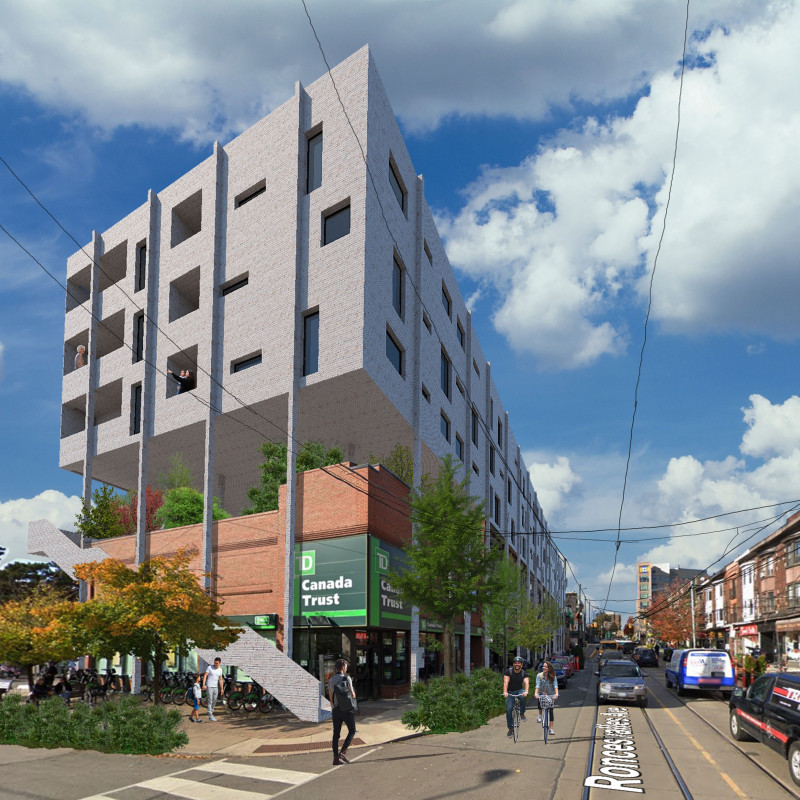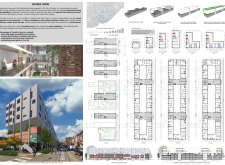5 key facts about this project
The design is located in Toronto, aligning with the city's goals for urban planning as defined in the Avenues & Mid-Rise Building Study. It focuses on increasing housing density while encouraging community interaction. The concept of Flexible Living aims to create residential units that serve both individual needs and foster a sense of belonging among residents.
Independent Construction
The structure uses independent construction methods, mainly relying on steel and wood. These materials provide important safety and support for the multi-story design, ensuring that the building can withstand urban challenges. They contribute to the building's resilience and longevity, making it suitable for its intended use.
Vertical Living and Community Spaces
Acquiring one or two modules of frontage enables vertical circulation and encourages the development of communal spaces. The flats are designed to follow the shapes of existing buildings, allowing for the inclusion of internal roofed green atriums. These atriums not only enhance the living space but also invite nature into the urban setting, giving residents a place to gather and relax.
Adaptability of Living Spaces
The project offers a modular system of accessible rooms that can adapt to different resident preferences. This flexibility allows for various room configurations and encourages customization in elements like window sizes. Such options enable residents to shape their living environments according to personal tastes while maintaining overall design coherence.
Integration of Green Infrastructure
Gaps between the floors serve as pocket parks, adding greenery to the urban landscape. These spaces offer utility and beauty, creating areas where residents can unwind and socialize. The thoughtful approach to design helps weave natural elements into city life, promoting a healthier living environment.
Internal green atriums play an essential role, acting as shared areas where residents can connect with nature. These spaces provide a sense of calm amidst the bustling city, enhancing the quality of life for those who call this place home.



















































